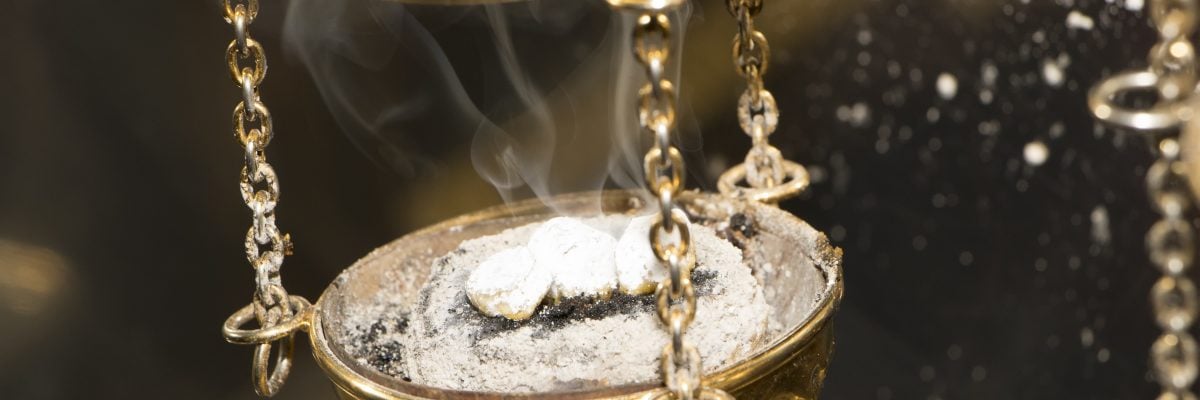
Protestant Fundamentalists don’t believe that sacraments exist, even though they have two: baptism and matrimony. Many of them use the term “ordinances” for baptism and their analog of the Eucharist, which they call “the Lord’s Supper.” The isn’t just a matter of nomenclature. Not only do they use different words than we do, but they mean different things.
To them, baptism is a sign and nothing more. To us, it is the sacrament that first brings sanctifying grace to the soul. To them, the Lord’s Supper is a mere memorial of Holy Thursday. To us, it is the re-presentation of the actual sacrifice on Calvary, but in an unbloody manner. To them, matrimony is a high state but not a permanent one. To us, it is a permanent and grace-filled union.
We all, Catholics and Fundamentalists, know that Fundamentalists reject sacraments, at least in the Catholic understanding of them, but they reject much more. They have a hearty dislike for distinctive Catholic practices and for what we call sacramentals.
Sacramentals are defined by the Catechism of the Catholic Church as
. . . sacred signs which bear a resemblance to the sacraments. They signify effects, particularly of a spiritual nature, which are obtained through the intercession of the Church. By them men are disposed to receive the chief effect of the sacraments, and various occasions in life are rendered holy (CCC 1667).
Pesky sacramentals can pop up all over the place, not just inside Catholic churches but even inside Fundamentalist churches. Consider the Fundamentalist wedding ceremony. The bride wears white and, perhaps, a veil. She carries a bouquet. She and the groom exchange vows and rings. Each of these actions and things has a religious significance: purity in the white garments, fidelity in the vows, for instance. Each is a sign of the holiness of matrimony. Each is a sacramental if the word is used in a wide sense.
If spoken to gently, Fundamentalists can come to accept the fact that they too use sacramentals, even if they dislike the word. They are especially uncomfortable, though, when told many of these sacramentals originated in pagan religions. After all, a standard Fundamentalist charge against Catholicism is that its distinctive customs and beliefs are of pagan origin.
Fundamentalists don’t want to admit that they too have borrowed from paganism, but that is exactly what they have done. After all, their churches are offshoots of offshoots from the Catholic Church, even if they won’t admit the fact. (Fundamentalists believe their brand of Christianity goes straight back to New Testament times. It actually goes back only to the nineteenth century.)
Let’s look at three Catholic practices (they can be considered sacramentals) that irk Fundamentalists. We’ll look at additional ones in the next blog post.
Genuflecting
When they pass the Blessed Sacrament, Catholics go down on one knee to honor the Real Presence. This posture of subservience makes perfect sense since Christ is really present in the tabernacle. Fundamentalists don’t believe he’s there, of course (they believe instead in a Real Absence), but they can be made to acknowledge the sensibleness of genuflecting through analogy.
Ask them to imagine themselves at Buckingham Palace, at an audience with the Queen of England. She enters the room and walks up to a woman. Under court protocol, what is the woman supposed to do? She is supposed to curtsy as a sign of respect for the queen.
Another analogy. A soldier meets an officer on the street. What does the soldier do? He salutes. Again, a sign of respect and an acknowledgment of a superior.
Who is more superior to us than God? Which Fundamentalist, transported back to first century Palestine, would not throw himself prostrate at the sight of Jesus? If that would be proper, then why not genuflect where Jesus is sacramentally present?
Similarly, at Mass we stand when the Gospel is read, out of respect for the very words of Jesus, and we sit to listen attentively to the other scriptural readings. At the consecration we kneel, kneeling being the posture of adoration. What we are doing is praying with our bodies, not just with our minds, and praying that way makes perfect sense for a creature composed of both body and soul.
Sign of the cross
Every Fundamentalist knows Catholics cross themselves when praying in church, when hiding in foxholes, and when walking up to the plate to bat. They don’t, as a rule, know that Eastern Orthodox Christians also cross themselves (although they do it “backward”), so they think the sign of the cross is something that immediately distinguishes Catholics from “real” Christians.
But they don’t know that “real” Christians began making the sign of the cross at a very early date. The theologian Tertullian, writing in A.D.211, said, “We furrow our forehead with the sign [of the cross].” Making the sign was already an old custom when he wrote. It may have been common even when the apostles were alive.
True, the practice is not mentioned in the New Testament, but neither are peculiarly Fundamentalist practices such as the altar call, in which people march to the front of a church to announce publicly that, because of the preaching, they have just decided to “make a commitment to Christ.”
The sign of the cross signifies two things at once: our redemption through the death of Jesus on the cross and the Trinity as the central truth of Christianity. When we make the sign we trace the cross on ourselves, and we recite the holy invocation: “In the name of the Father, and of the Son, and of the Holy Spirit.”
Incense
Not used as often in our liturgies as it once was, incense symbolizes the pleasant odor of Christian virtue and our prayers rising to God. It is the first half of the “smells and bells,” and most Fundamentalists think only Catholics use incense. But incense is not peculiar to Catholics. The ancient Jews used it: incense accompanied prayers at the Temple (Luke 1:10). And one of the gifts given to the Christ Child by the Magi was frankincense (Matt. 2:11).
But all that was before Christianity began, say Fundamentalists. Maybe so, but the Book of Revelation deals with what happens afterward, and there we find that “the smoke of the incense along with the prayers of the holy ones went up before God from the hands of an angel” (Rev. 8:4). If there’s incense in heaven, why not in churches here below?
I’ll continue with more examples next week.



